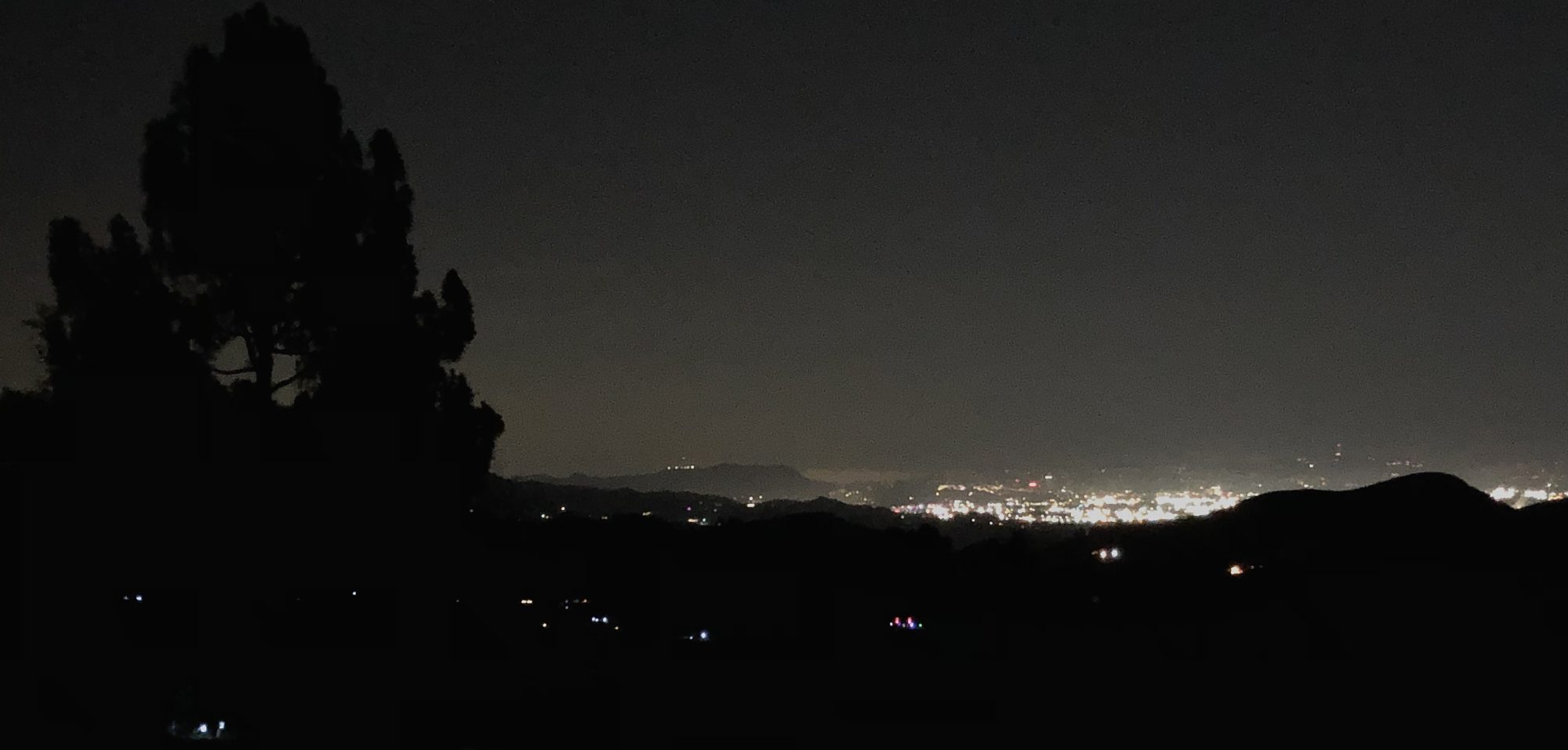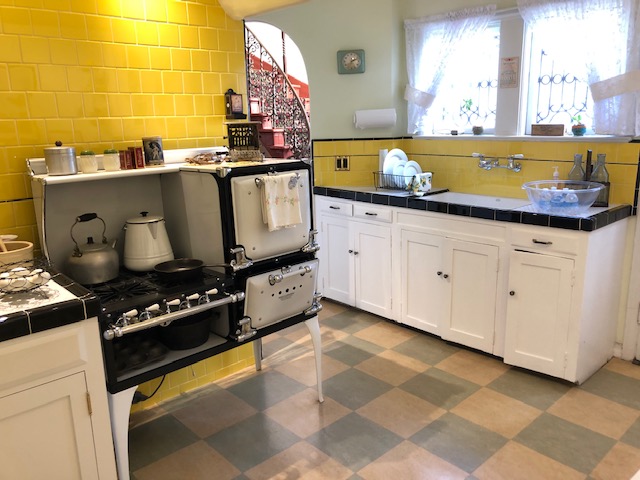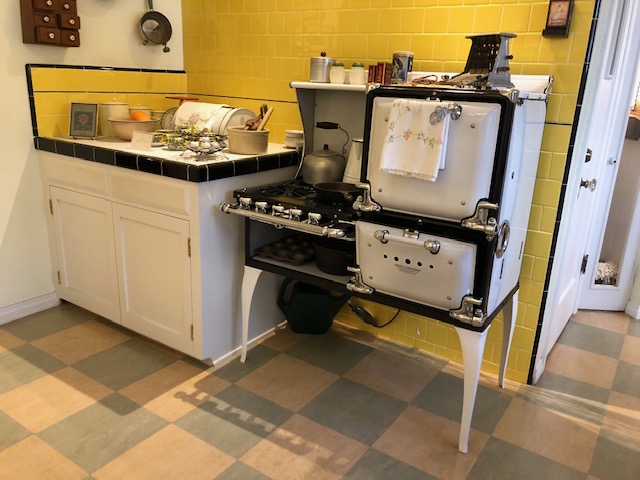“A woman preaching is like a dog walking upon its hind legs. It is not done well; but you are surprised to find it done at all.”
— Dr. Samuel Johnson
Above: Holograms demonstrate the innovative stagecraft that made Sister’s preaching famous, or notorious.



Everyone called Aimee Sister 
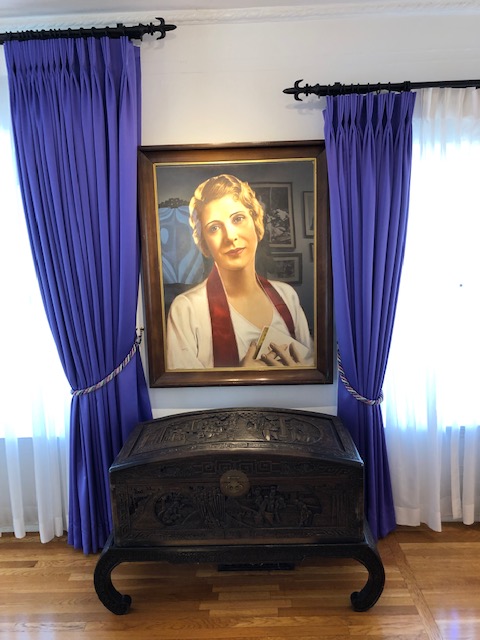
In 1918, the famous evangelist unpacked her megaphone in Los Angeles and never left. She had such success here with Pentecostal revivals that, by 1924 she had built a revolutionary 5,000-seat megaphone-shaped (and radio broadcast-friendly) auditorium on the rim of Echo Park. It was the very beginning of the Golden Age of Radio, and her ministry would play a huge part in bringing listeners to the new medium; people actually bought radios to hear her evangel.
Already since 1922, while the massive Temple was a-building, Aimee had been living on the site in a swank early-Hollywood Regency Parsonage. She had architect E.F. Leicht (Culver Hotel, Pasadena Playhouse) finish her Parsonage first so that she and her manager-mother Minnie could have the home comforts while they built up their Church of the Foursquare Gospel. Aimee was as visionary and dreamy and involved, and as fussy and publicity-minded, about her private living space as her friends the movie stars were: she made sure her boudoir had THE view of the glistening fountain plashing in Echo Park Lake. As with the Temple, the house is “megaphone shaped” — the front makes a long graceful bow, a trope of “Regency” style.

The Byzantine dome, with paint made from crushed abalone shells. 



Mrs. MacPherson took a lot of heat during her lifetime, and afterwards, for hypocrisy: that is, for preaching while personally “going Hollywood.” Much of the criticism can be chalked up to old-fashioned sexism; how dare this attractive woman, incidentally funny, vivacious, warm, sophisticated, and draped head-to-toe in clingy bias-cut-satin-sequin robes, proclaim the Gospel of Christ? She must be a harlot. Aimee didn’t have 5,000 seats, but the one she had was a honey. (Honi soit qui mal y pense, says the View.)
Aimee was a charismatic woman who acted like a woman during the 1930s, and that was threatening as well as titillating. But Aimee was no grifter and no hypocrite. The Foursquare Church fed hundreds of thousands of meals to Forgotten Men and Women, three times a day, all through the Depression, no questions asked. She preached a middle-of-the-road Methodist gospel, only love and joy and forgiveness, no brimstone. And she ministered equally to all races, although she was finally forced by the City to minister to the Black and Mexican (i.e., Communist) sinners in areas away from the white sinners in Echo Park. Aimee always had bands playing, and choirs singing. There were blankets available during the wet California winters. Few Americans during the Depression — in Hollywood, in the Church, or in government — organized ANYTHING remotely close to this scale, to actually help and encourage starving persons.
The Parsonage allows a self-guided tour, with many interesting exhibits. Aimee’s private personality and her enthusiastic public spirit are admirably presented. The Church is to be commended for preserving this important site for Los Angeles history.

The motto: res non verba, deeds not words. 



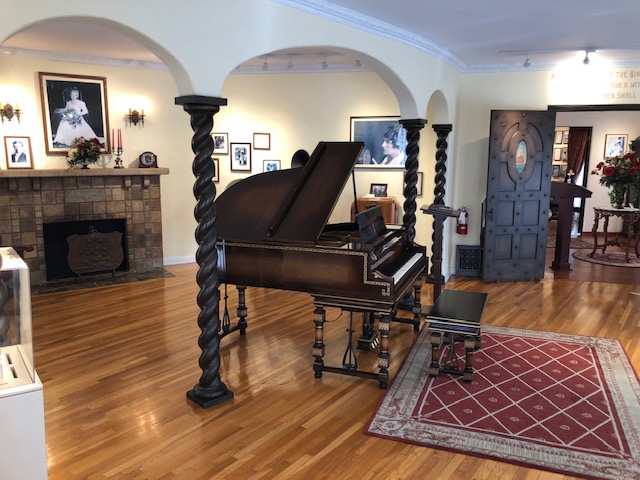

Though they’ve lost their radio empire, the Foursquare Church is going strong at the restored Angelus Temple, with weekly services in the whole Pentecost of languages that make up the modern-day Metropolis of the Queen of the Angels.
https://www.kcet.org/shows/lost-la/los-angeles-in-buildings-the-angelus-temple
Click above for more on Mrs. MacPherson, and her importance to the social history of LA.
